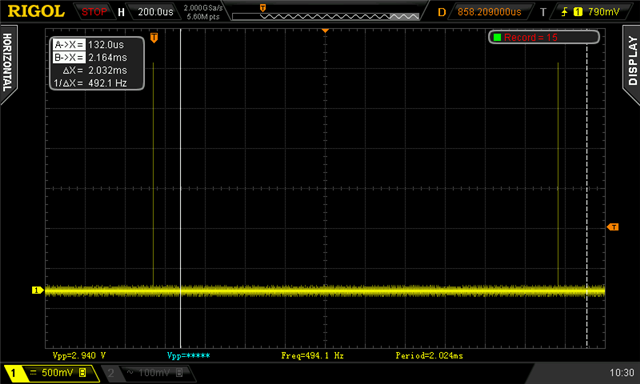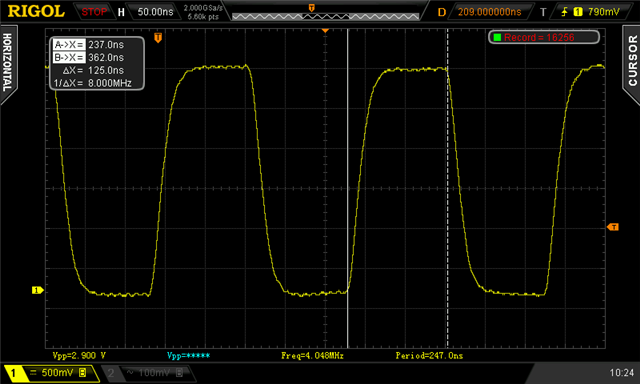I need to generate a clean 10kHz sine wave. I tried using PWM (https://devzone.nordicsemi.com/f/nordic-q-a/89209/clarification-on-how-to-generate-a-10khz-sine-wave-with-pwm-and-dma), and it works, but it's hard to filter the resulting signal. Given the 16MHz clock limit, and the need to have a 10kHz sine, I can only use 40 values and 40 points in the LUT.
One of the ideas was to to use PDM instead of PWM. the nRF52840 doesn't have PDM out, nor a way to stream a sequence of bits using DMA (as far as I can tell).
I thought that I could use a PWM with only 2 pulse (possible values 0, 1, and 2) and with that build any stream of bits. It would be expensive in terms of memory (every 2 bits is stored in a 16 bit array), but would work for a 800 point LUT.
So I tried this:
but I got very weird results. On my scope, I see a single pulse at a ~490Hz frequency

When I change the clock to 8MHz (.base_clock = NRF_PWM_CLK_16MHz), clean signal as expected

My question is: am I using the SDK functions wrongly? Is there a way to make a 16MHz, two pulses, PWM signal work? Did I hit a hardware limitation?


